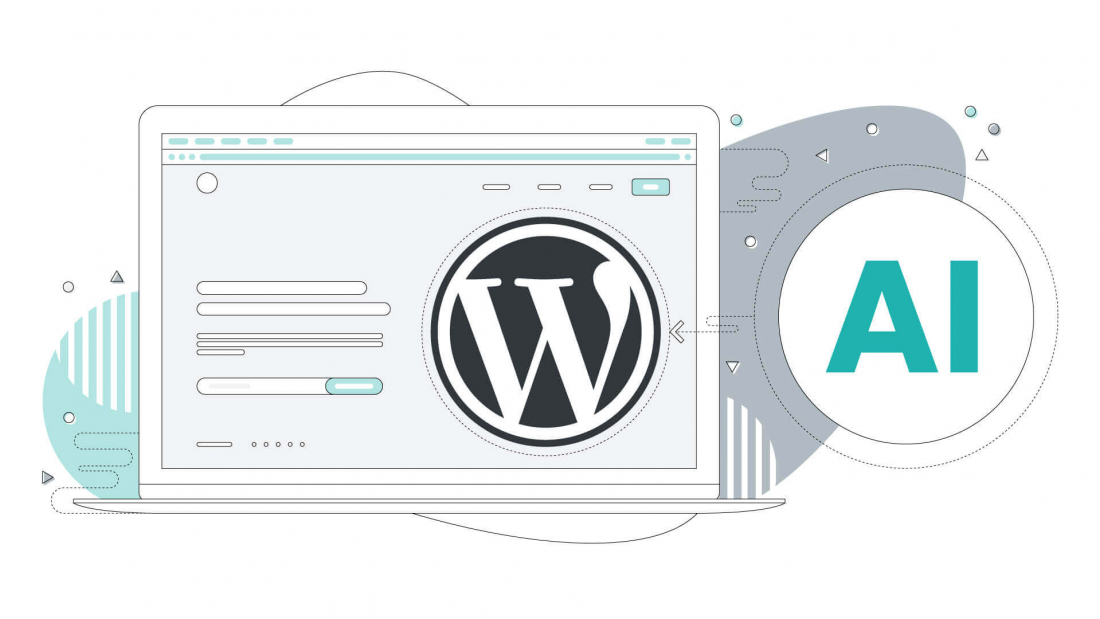In the ever-evolving landscape of web development, staying ahead of the curve is essential for businesses and individuals seeking to establish a strong online presence. As technology progresses, artificial intelligence (AI) is revolutionizing various industries, and WordPress development is no exception. In this blog, we’ll explore why AI is the next step in WordPress development and how it is reshaping the way we build websites.

- Personalization and User Experience:
AI enables websites to offer personalized user experiences like never before. Through machine learning algorithms, AI can analyze user behavior, preferences, and interactions to deliver tailored content, product recommendations, and dynamic web layouts. Personalized experiences enhance user engagement, boost conversion rates, and create lasting connections with visitors. - Smart Content Generation:
Content creation is a time-consuming aspect of website development. However, with AI-driven content generation tools, developers can automate the process and create high-quality, SEO-optimized content at scale. AI-powered language models can produce blog posts, product descriptions, and even landing pages, saving valuable time and effort for businesses. - Enhanced Search and Navigation:
AI can significantly improve website search and navigation capabilities. Advanced AI search algorithms can understand natural language queries and deliver relevant results, making it easier for users to find what they need quickly. AI-driven chatbots and virtual assistants further enhance user experience by providing real-time assistance and answering customer queries. - Automated Testing and Debugging:
Testing and debugging are critical components of website development to ensure optimal performance. AI-powered testing tools can automate the process of identifying bugs, glitches, and vulnerabilities, streamlining the debugging phase and reducing the likelihood of potential issues affecting the website’s functionality. - Predictive Analytics for Business Insights:
AI-driven predictive analytics provide valuable insights into user behavior, customer preferences, and market trends. WordPress developers can leverage this data to make informed decisions about website design, content strategy, and marketing campaigns, ultimately driving better business outcomes. - Adaptive Design and Layout:
AI can analyze and adapt website design based on user interactions and behavior. By leveraging AI-powered design tools, developers can create websites that dynamically adjust layouts, colors, and content to optimize user engagement and conversions across different devices and screen sizes. - Cybersecurity and Fraud Prevention:
Website security is a top concern for businesses and website owners. AI can enhance cybersecurity by detecting and preventing potential threats, identifying suspicious activities, and implementing robust security measures. AI-powered security solutions provide real-time monitoring and threat response, ensuring the safety of sensitive data and user information.
Conclusion:
As AI continues to shape the future of technology, its integration into WordPress development is proving to be a game-changer. The potential for personalized user experiences, automated content generation, enhanced search capabilities, and predictive analytics empowers businesses to deliver more powerful and engaging websites. AI streamlines development processes, enhances user experiences, and optimizes website performance, making custom development less relevant for many use cases.
By embracing AI in WordPress development, businesses and developers can create websites that are not only aesthetically appealing but also highly functional, intuitive, and tailored to individual user needs. As we move into an era of AI-driven web development, the possibilities are limitless, and those who embrace this transformative technology are poised to lead the way in the ever-evolving digital landscape.



Add a Comment